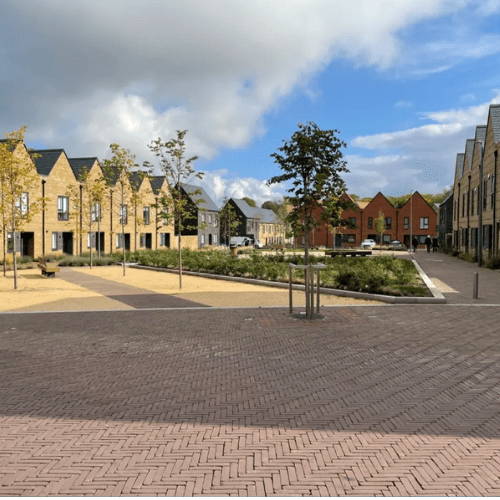Integrating transport and planning to deliver better places - Looking back to the future

Geoff is a transport planning and placemaking expert with a broad range of experience including transport strategy, development planning, policy development, highways engineering and urban design. Geoff has a particular passion for vision-led masterplanning and multi-modal transport scheme design, with the aim of creating less car dependent places.

With ITP being formed during the last high-water mark of integrated transport planning – the 1998 “New Deal for Transport” – we’re certainly excited about the prospect of a more integrated approach to national transport strategy. So, like flannel shirts and baggy jeans, can integrated transport and planning make a 90s comeback, and what needs to happen to achieve great outcomes from a transport and placemaking perspective?
Good placemaking pays
Too often we don’t get the basics right. As anyone who owned a Tamagotchi (which are also making a 90s comeback!) in the 90s will know – good growth is everything. That means major development sites need to be in locations well-connected by non-car modes, and at reasonable density (around 50dph average across a site). Getting this right enhances public transport for new and existing communities at lower cost, puts on-site services within walking distance meaning people don’t need to drive, produces streets that are more active and residents who are happier with where they live. It also makes financial sense to deliver housing in this way – people pay more to live in nice places and more houses can be built on the same land. All of this makes integrated multi-modal transport possible.None of this is new, but both public and private sector clients are often nervous about density, as well as vision-led approaches for sites. As we noted in our response to the INTS, the recent ‘vision-led’ changes to NPPF are a step in the right direction. However, the hard-nosed NPPF test of what should be refused revolves around highway impacts. Many developers will opt for the perceived certainty of the traditional ‘predict and provide’ approach focused on highway impacts and mitigation. This will ultimately make integrated transport impossible in these sites and promote the delivery of car dependent places, with less healthy and less happy people. To compound this challenge, there is a lack of clarity on what a vison-led approach is with an understandable perception that it adds complexity…
…if there are two things developers avoid its uncertainty and complexity!
What changes are needed?
At the national level, the grounds for refusing development in NPPF paragraph 116 should be extended beyond highway impacts and consider multi-modal connectivity (integrated transport!). The forthcoming guidance on vision-led transport planning needs to provide a clear process that is no more burdensome than traditional approaches. The INTS should reference the National Model Design Code (soon to be updated), to give a clear shared view on what ‘good’ looks like that can inform the vision setting in Local Plans and development proposals. All the above should be focused on providing certainty and reducing complexity.Regionally, devolution and Strategic Development Strategies should help focus growth on the best locations (making use of the proposed DfT Connectivity Tool to be released in May). This will cut across administrative boundaries and reduce the dominance of the call for sites process, which tends to favour more poorly connected greenfield land. This could be supported by Development Corporation type powers where necessary.
What can we do in projects now?
At the project level we work hard to help our clients deliver great places and recognise that integrated transport on its own isn’t enough. It is critical that design teams work collaboratively from the start. Land use mix, landscape, urban design and transport must all pull in the same direction and focus on shared design responses that the client can sell.Secondly, there needs to be confidence that the transport evidence will stand up to scrutiny. We’ve researched transport outcomes from developments around the world and have developed a tool, called the Mode Shift Model, that embeds this in the Transport Assessment process. This approach has been battle-hardened through EiP and used with a range of stakeholders, including National Highways.
Finally, with a vision-led approach, the design effort is usually front-loaded – you need to know early on what you will do differently to achieve the vision and only test the residual highway impacts once mode shift is baked in. A side benefit of this is that you can convince key stakeholders (i.e. transport and highway officers, National Highways) of your intentions by showing them upfront how you will achieve different outcomes. This approach does not require more time or more money – it just requires the effort to be focused differently. Investing the effort upfront gives more assured outcomes.
We need to integrate more than just transport
A clear emerging theme here is that the best outcomes are rarely delivered by thinking about transport in isolation. The INTS should set out a framework for how transport and land-use planning should be better integrated, with a focus on the types of places and outcomes we want to see and with government funding aligned appropriately. If some of the ideas above at the national, regional and local level are realised we might begin to see better places delivered more consistently.

Our experts are happy to assist you
Experts team Sustainable development
Sustainable development
Discover our vision-led approach to planning new communities to embed sustainable commuting from the outset.
